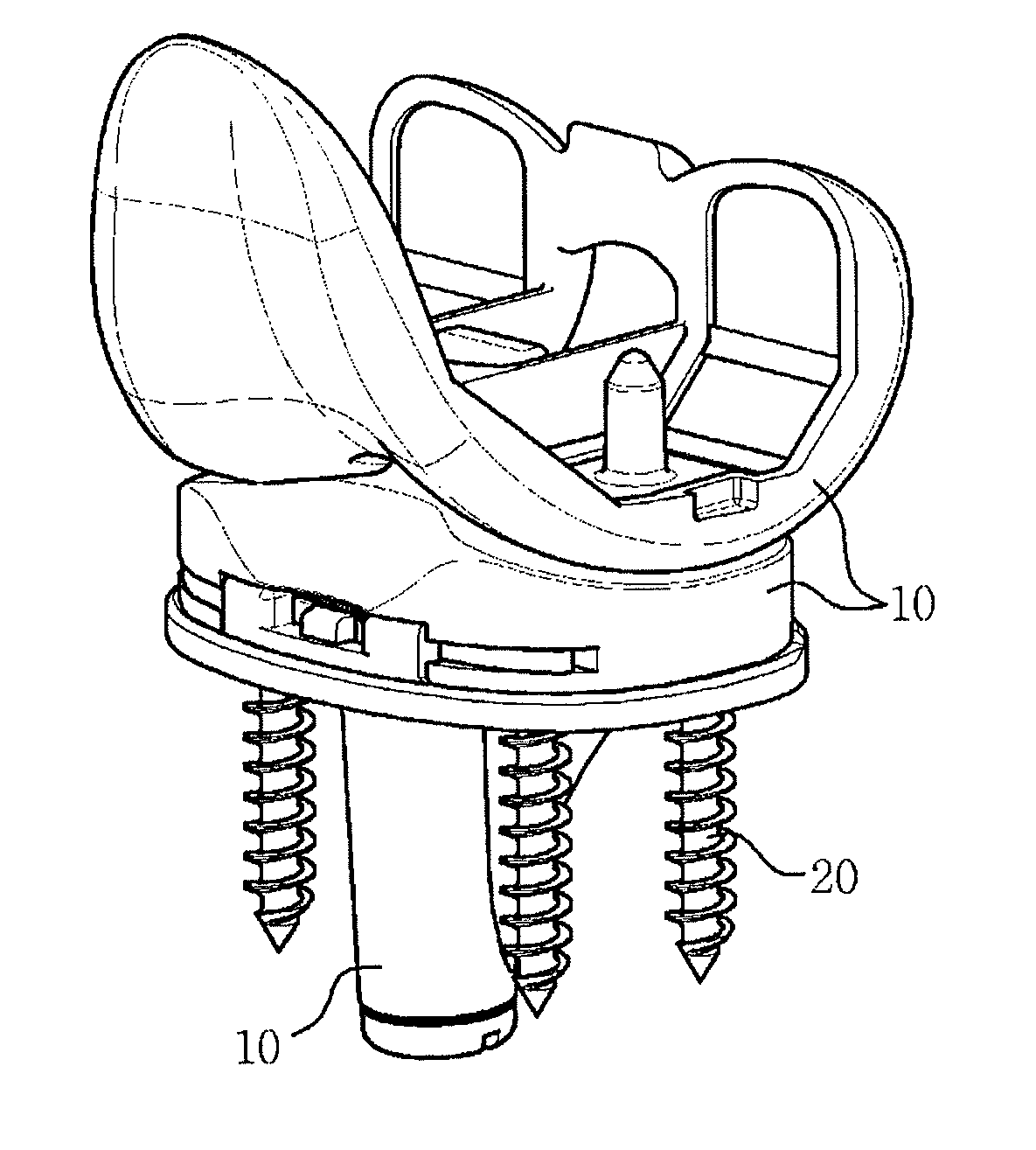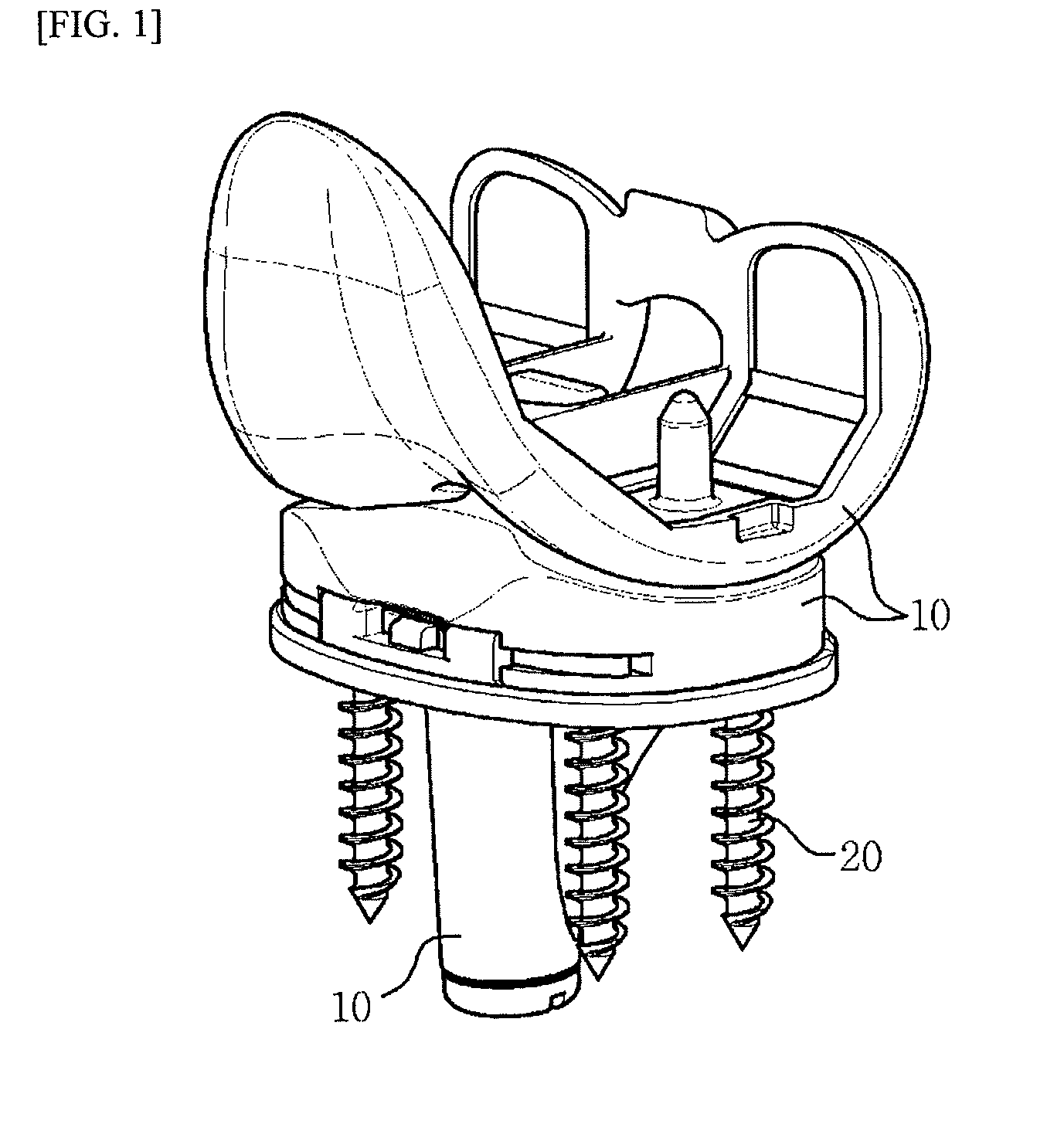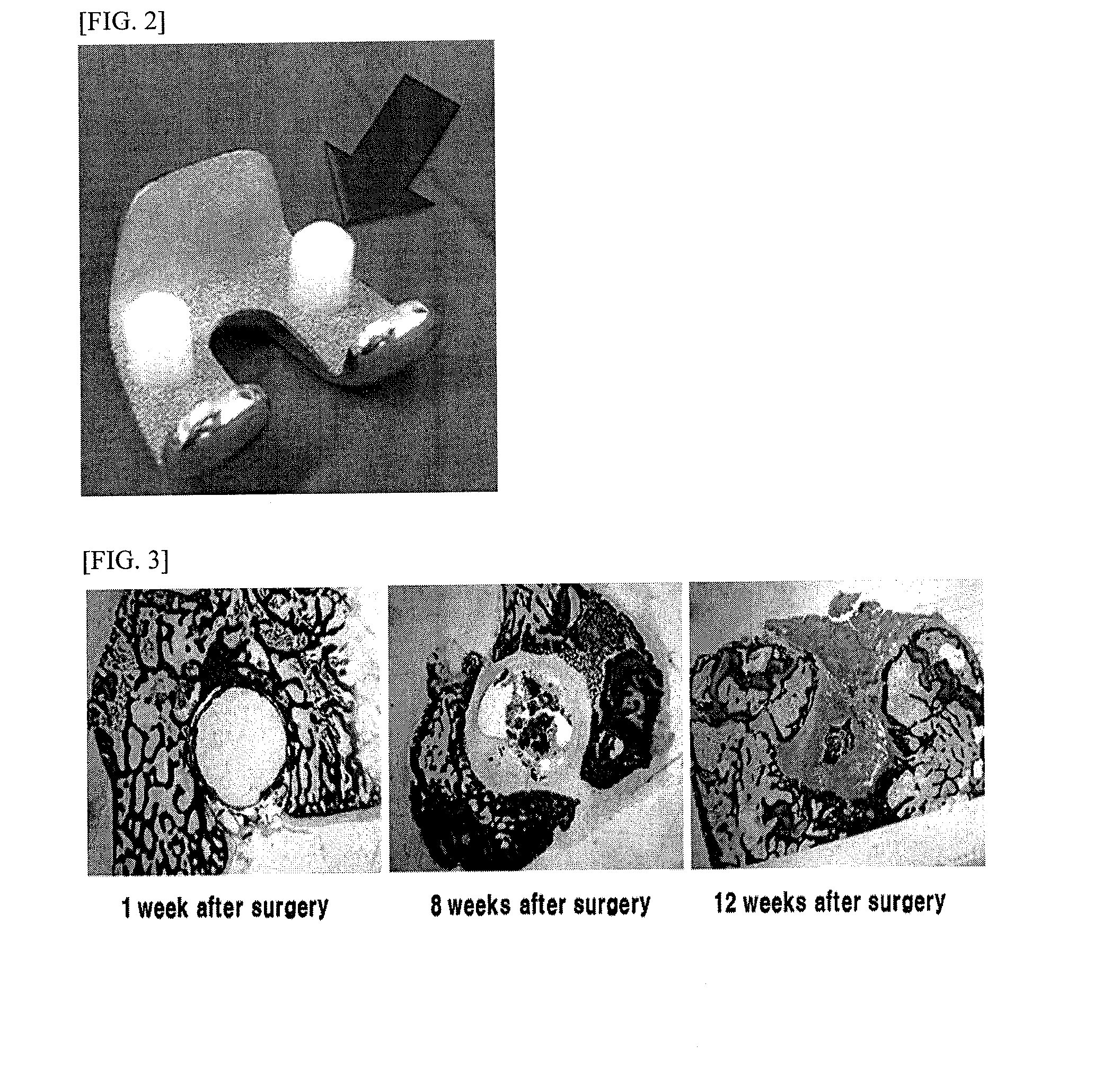Implant
a technology of implants and splints, applied in the field of implants, can solve the problems of the human body, affecting the performance of artificial joints, and separating from artificial joints, etc., and achieves the effects of high initial strength, and high initial bending strength
- Summary
- Abstract
- Description
- Claims
- Application Information
AI Technical Summary
Benefits of technology
Problems solved by technology
Method used
Image
Examples
preparation examples
[0085]The components having composition ratios given in Table 1 below were charged into a crucible made of stainless steel (SUS 410) and having an inner diameter of 50 mm.
[0086]Subsequently, The crucible was heated to a temperature of 700° C.˜750° C. using a resistance heating furnace while argon gas flowing around the crucible such that iron, nickel, manganese, aluminum and magnesium charged in the crucible did not come into contact with air, so as to melt iron, nickel, aluminum, manganese and magnesium. The molten iron, nickel, aluminum, manganese and magnesium were stirred by shaking the crucible such that they were easily mixed with each other. The completely-molten magnesium alloy was cooled to prepare a solid magnesium alloy. In this case, in order to improve the mechanical strength of the solid magnesium alloy, the molten magnesium alloy was rapidly cooled by immersing the crucible into water (20° C.).
TABLE 1Fe (parts byNi (parts byAl (parts byMn (partsMg (partsCa (partsweigh...
example 1
[0087]The biodegradable magnesium alloy of Preparation Example 1 was pulverized to obtain powder having an average particle size of 500 μmu (hereinafter, referred to as “biodegradable magnesium alloy powder”).
[0088]The biodegradable magnesium alloy powder was mixed with a biodegradable polymer (LPLG (poly(L-lactide-co-glycolide))) at a volume ratio of 85:15. Thereafter, the mixture was pressed at a temperature of 200° C. and a pressure of 5 atms to manufacture a screw-shaped implant.
[0089]FIG. 2 is a photograph showing an artificial joint mounted with the implant manufactured in Example 1.
[0090]Referring to FIG. 2, the implant (arrow) mounted in the artificial joint (brand name: Optigen, manufactured by Yon & I Corp.) is accurately depicted.
example 2
[0091]The biodegradable magnesium alloy of Preparation Example 1 was extruded at an extrusion temperature of 400° C., and the reduction ratio (extrusion ratio) of the section area of the biodegradable magnesium alloy before and after extrusion was fixed at 15:1. The extruded magnesium alloy was processed to such a degree that it can be transplanted into a rat, so as to manufacture an implant.
PUM
 Login to View More
Login to View More Abstract
Description
Claims
Application Information
 Login to View More
Login to View More - R&D
- Intellectual Property
- Life Sciences
- Materials
- Tech Scout
- Unparalleled Data Quality
- Higher Quality Content
- 60% Fewer Hallucinations
Browse by: Latest US Patents, China's latest patents, Technical Efficacy Thesaurus, Application Domain, Technology Topic, Popular Technical Reports.
© 2025 PatSnap. All rights reserved.Legal|Privacy policy|Modern Slavery Act Transparency Statement|Sitemap|About US| Contact US: help@patsnap.com



